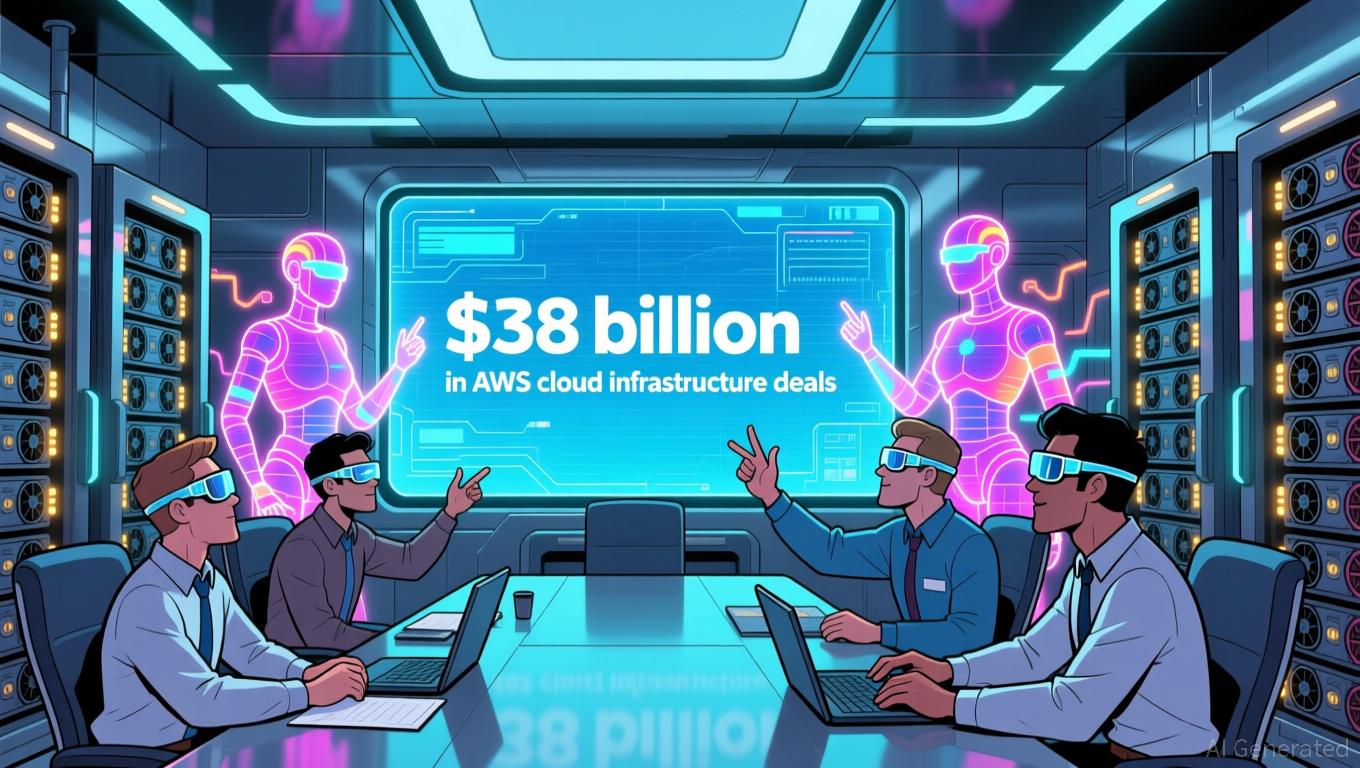OpenAI's $1.4 Trillion AI Risk: Will Altman's Refusal of a Bailout Succeed?
- OpenAI CEO Sam Altman rejected "too big to fail" claims, asserting the AI firm rejects government bailouts and state intervention in business decisions. - A $38B AWS partnership provides OpenAI with 100K+ Nvidia GPUs and millions of CPUs, diversifying cloud reliance after a $500B PBC restructuring with Microsoft . - Altman projects $20B annual revenue by year-end and $100B+ by 2030, despite $1.4T infrastructure spending plans raising sustainability concerns among analysts. - Political scrutiny grows as F
Sam Altman, the head of OpenAI, has strongly dismissed suggestions that his organization is "too big to fail." He stressed that OpenAI is not seeking any government backing or taxpayer-funded rescues to support its significant infrastructure investments. Through several public comments and a comprehensive post on X, Altman reaffirmed OpenAI’s opposition to government involvement in the industry, stating, "We do not believe governments should decide which companies succeed or fail, nor should taxpayers be responsible for rescuing businesses that make poor choices," as reported by Business Insider.
These statements follow OpenAI’s recent $38 billion collaboration with

Altman’s remarks reflect broader worries about whether OpenAI’s rapid growth is financially sustainable. The company has pledged to spend $1.4 trillion on computing infrastructure over the next eight years, sparking doubts about its ability to generate enough income. Nevertheless, Altman remains optimistic about OpenAI’s future, forecasting an annual revenue run rate of $20 billion by the end of the year, with the possibility of reaching hundreds of billions by 2030. He indicated that enterprise solutions, consumer hardware, and robotics will be key revenue drivers, as he explained to the media and in public statements.
This discussion has attracted political attention, especially from Florida Governor Ron DeSantis, who criticized the "too big to fail" label and pointed out that OpenAI has not yet achieved profitability. DeSantis also noted the company’s strong connections with major tech firms like Microsoft and Amazon, cautioning against excessive concentration of power in the AI industry, according to Benzinga.
Meanwhile, David Sacks, the White House’s AI advisor, made it clear that federal bailouts for AI companies are not being considered, echoing Altman’s stance against government intervention, as reported by Yahoo Finance.Experts in the market remain split. While the AWS deal has lifted Amazon’s share price and strengthened AWS’s position in the AI infrastructure sector, some warn that the surge in AI spending could be unsustainable. OpenAI’s projected costs—expected to reach $1 trillion by 2030—currently exceed its revenue, raising doubts about its long-term prospects, as Coincodex notes. Nvidia, which stands to benefit greatly from the agreement, continues to see high demand for its chips, but the growing energy requirements of AI pose significant sustainability and resource challenges, according to WebProNews.
OpenAI’s shift to a PBC model and its adoption of a multi-cloud strategy highlight its efforts to balance innovation with fiscal discipline. The company’s future will depend on its ability to manage regulatory pressures, attract private funding, and meet its revenue targets—without turning to government assistance.
Disclaimer: The content of this article solely reflects the author's opinion and does not represent the platform in any capacity. This article is not intended to serve as a reference for making investment decisions.
You may also like
First U.S. Litecoin ETF Debut Sparks Surge Toward $1,000 Price Target by 2025
- Analysts predict Litecoin (LTC) could surge to $1,000 by 2025, driven by bullish technical indicators and the first U.S. spot ETF launch. - Crypto analyst Hal proposes a high-risk strategy: buying LTC at $30 and selling at $9,000 to generate 270x returns, citing potential breakout from consolidation. - Institutional adoption grows with Canary Capital's $1.65M LTC ETF and Stake.com processing 16% of daily LTC transactions for gaming microtransactions. - Technical analysis shows mixed signals: RSI neutrali

Stablecoin Boom Triggers $6 Trillion Banking Crisis Concerns Amid Regulatory Disputes
- Stable's deposit pre-activation event raised $860M by Nov 7, with $500M cap triggering proportional distribution if exceeded. - Canada's 2025 stablecoin framework mandates 100% reserve backing and $10M+ oversight funding to prevent depegging risks. - U.S. banks warn $6T deposit outflows could destabilize banking if interest-bearing stablecoins are permitted, clashing with crypto firms like Coinbase . - Regulatory tensions highlight global challenges balancing stablecoin innovation with financial stabilit

Fed Backs Stablecoins While Regulations Lag Behind
- Federal Reserve officials highlight stablecoins as a transformative force in global payments, emphasizing cost reduction and cross-border efficiency. - Latin America's 60%+ crypto users adopt stablecoins like USDT to hedge against currency devaluation, with Brazil classifying them as formal assets. - U.S. banks and tech firms (PayPal, JPMorgan) leverage stablecoins for 24/7 settlements and low-fee transactions, accelerated by the GENIUS Act. - Regulatory challenges persist as bipartisan crypto legislatio

DeFi’s Fragile Foundation: USDX Crash Highlights Weaknesses in Synthetic Stablecoins
- USDX stablecoin, issued by Stable Labs, has plunged to $0.74 due to a Balancer V2 Vault exploit draining $100M, triggering forced liquidations and depegging from $1. - The collapse exposed vulnerabilities in synthetic stablecoin mechanisms, with inactive collateral rebalancing and cross-collateral swaps exacerbating liquidity crises across DeFi platforms. - Emergency governance actions (e.g., Lista DAO's LIP 022) aim to curb losses via oracle price adjustments, while experts warn of systemic risks in int
